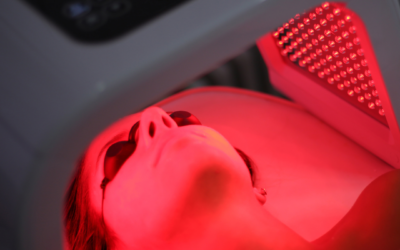
A strawberry hemangioma is a clump of tiny blood vessels that form under the skin, causing a raised red skin growth that may be present at birth or develop during infancy. A hemangioma looks like a strawberry birthmark but is actually a benign (noncancerous) tumor.
The tumor often grows for the first year and then shrinks, usually without treatment. Approximately 10% disappear by the child’s first birthday. The remaining 90% of hemangiomas fade away by a child’s 10th birthday.
Who develops hemangiomas?
Hemangiomas are most common in children. They are not usually visible at birth. Instead, they typically show up during the first few days or months of life. They can appear on any body part but are most common on the head or face.
How common are strawberry hemangiomas?
Infantile hemangiomas are the most common vascular tumors. As many as 1 in 10 babies develop a hemangioma.
Are there different types of hemangiomas?
Yes, there are a few different types of hemangiomas:
- Superficial hemangiomas form just underneath the top layer of the skin. Strawberry hemangiomas are a type of superficial hemangioma. Strawberry hemangiomas form when blood vessels and cells close to the skin don’t develop as they should. Instead, the vessels clump together into a noncancerous mass or tumor.
- Cavernous hemangiomas go deeper into the skin’s bottom layer. The skin may bulge and have a blue or purple tint. A deep hemangioma can be painful and prone to bleeding.
- Mixed hemangiomas have a strawberry look as well as a skin bulge.
Can adults get strawberry hemangiomas?
Hemangiomas can form during adulthood. In adults, this benign growth of blood vessels is a cherry angioma. The round, cherry-red spots may be smooth or raised. They typically appear on a person’s trunk after age 30. Around 3 in 4 people over age 75 have them. Because they’re so common with aging, they’re also called senile angiomas.
What are the risk factors for strawberry hemangiomas?
Any child can have a strawberry hemangioma, but these factors may increase the risk:
- Female sex. Hemangiomas are two to three times more common among females than males.
- Low birth weight (less than 5½ pounds).
- Multiple births (twins, triplets or more).
- Premature birth (before the 37th week of pregnancy).
- White race.
How are strawberry hemangiomas treated?
Many children with strawberry hemangiomas don’t need treatment. If the hemangiomas pose any level of health risk, some treatment options may include:
- Beta-blockers
- Laser treatments
- Surgical removal
If you or your child has a hemangioma and would like a second opinion, the board-certified dermatologists at Forefront Dermatology are here to help. Find a location near you today.





